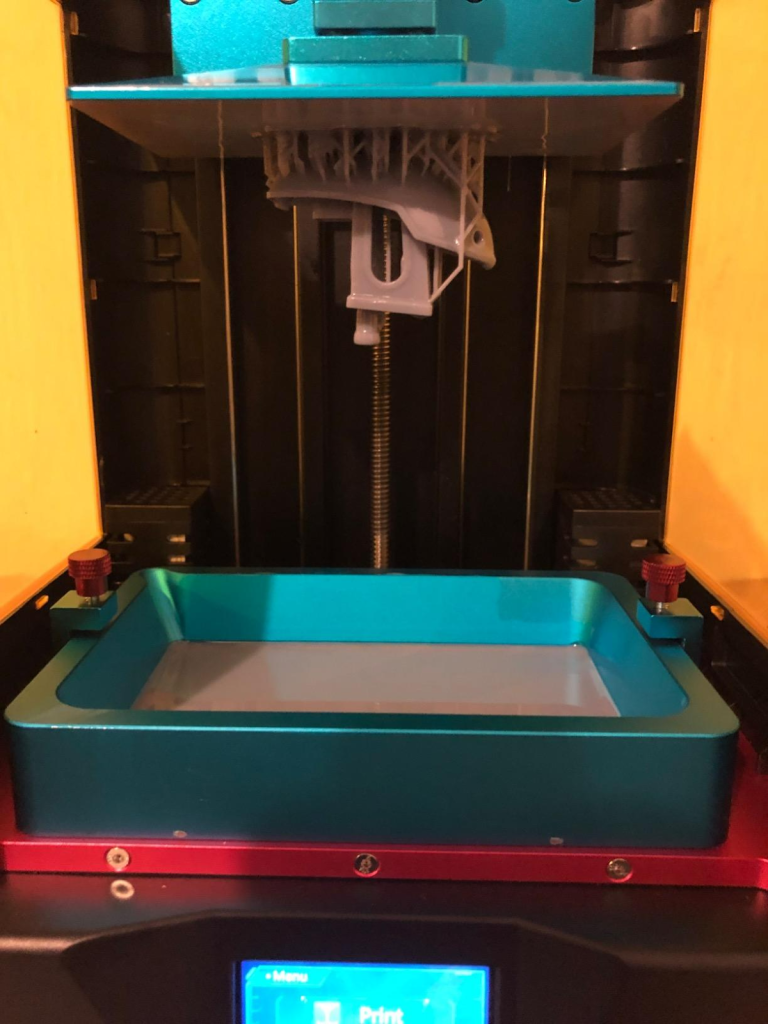As a 3D printing aficionado, I’ve always been captivated by the unlimited possibilities that this technology provides. Fused Filament Fabrication (FFF), also known as Fused Deposition Modeling (FDM), has grown in popularity among 3D printing processes due to its ease of use, low cost, and adaptability.
GearBerry offers a variety of cutting-edge GearBerry 3D Printer and accessories as part of its mission to provide innovative 3D printing solutions. Their brand is based on competence, precision, and customer pleasure. GearBerry wants to allow both professionals and enthusiasts to unleash their creativity and bring their ideas to reality by integrating modern technology with user-friendly interfaces. In this post, we will look at the fundamentals of FDM 3D printing, including its technique, uses, advantages, and disadvantages.
Getting to Know FDM 3D Printing
Using a continuous thread of thermoplastic material, FDM 3D printing creates items layer by layer. A digital model serves as the foundation and is divided into several layers using specialist software. The 3D printer receives the cut-out model and heats the filament before extruding it onto a manufacturing platform through a nozzle. Layer by layer, the molten material is deposited by the controlled movement of the nozzle to form a solid item.
Step-by-Step Guide to the FDM Process
To better understand how the FDM process works, let’s divide it down into important steps:
Step 1: Create the Model
The first step is to use computer-aided design (CAD) software to produce or obtain a 3D model. This model defines the desired object’s shape and geometry.
Step 2: Model Slicing
Using slicing software, the 3D model is divided into numerous layers with thicknesses ranging from 0.1mm to 0.4mm. This software generates printer instructions for each layer.

Step 3: Setup the Printer
The 3D printers must be prepared before printing. This comprises cleaning the build platform, using an adhesive or surface treatment to enhance adherence, and putting the filament into the printer’s extruder.
Step 4: Printing the object
The sliced file is transmitted to the printer once it is ready, and the filament is then heated until it melts. The nozzle deposits the molten material onto the build platform layer by layer as it moves in accordance with commands from the slicing program.
Step 5: Solidification and Cooling
Each layer is applied, rapidly cools, solidifies, and adheres to the ones before it. Until the entire thing is finished, this process is repeated.
Step six : Post-Processing
After printing, the item might need to go through post-processing stages like support structure removal, rough surface sanding, or further treatments like painting or polishing.
FDM 3D Printing-3
FDM 3D Printing Applications
FDM 3D printing is used in a variety of businesses and areas. Among the notable applications are:
1. FDM is frequently utilized for rapid prototyping due to its low cost and ability to manufacture functioning prototypes quickly.
2. FDM is used to manufacture jigs, fixtures, and other tooling components that aid in manufacturing operations. These tools can be customized, resulting in increased efficiency and shorter lead times.
3. FDM printers are widely found at educational institutions and research centers. They provide chances for hands-on learning and the exploration of new ideas and concepts.
4. FDM allows designers and engineers to swiftly develop designs, test functionality, and check form and fit before turning to more expensive production methods.
Advantages of FDM 3D Printing
FDM 3D printing has a number of features that contribute to its widespread use:
Accessibility and Affordability
FDM printers are affordable to a wide spectrum of consumers, from enthusiasts to professionals. Filaments used in FDM printing are also less expensive than other 3D printing materials.
Material Flexibility
FDM printers may use a variety of thermoplastic filaments, including PLA, ABS, PETG, and others. Each material has unique features such as strength, flexibility, and heat resistance, which allows for a wide range of applications.
Ease of Use
FDM printers are simple to use and set up, making them ideal for novices. The slicing program has an easy-to-use interface for preparing and optimizing print settings.
FDM 3D Printing-4
Strong and Durable Prints
Strong and long-lasting prints are possible with FDM, particularly when employing high-quality filaments and the right print parameters. The strength and longevity of FDM prints are a result of the layer bonding.
FDM 3D Printing Limitations
While FDM 3D printing has numerous advantages, there are certain drawbacks to consider:
Layer Resolution
Due to the layer-by-layer deposition process, FDM prints often have visible layer lines. Smooth and precise details may necessitate smaller layer heights and finer nozzle diameters, although this will increase print time.
Print Speed
When compared to other 3D printing methods, FDM printing is comparatively slow. The speed is affected by parameters like layer height, infill density, and design complexity.
Support Structures
While FDM printers can build support structures, removing them may leave marks or necessitate additional post-processing operations. Designs with elaborate overhangs or complex geometries may necessitate more support, lengthening print time and increasing material consumption.
FDM 3D Printing-5
Limitations on Materials
Although FDM printers can use a variety of materials, each material has advantages and disadvantages. For instance, ABS may distort while printing if the printing conditions are not managed appropriately, whereas PLA is not appropriate for high-temperature applications.
Selecting an FDM Printer
This has many models of 3D printers, such as Anycubic Photon M3, LONGER LK5 Pro, Anycubic Kobra. When considering buying an FDM 3D printer, numerous variables should be considered:
Print Bed Size
Determine the required print size and confirm that the printer’s build volume can accept it.
Print Resolution
Think about the printer’s layer height, nozzle size, and overall print quality.
Features and Connectivity
Consider additional features such as touchscreen interfaces, Wi-Fi connectivity, and compatibility with third-party software.
Brand and Support
Look at respected brands that provide excellent customer service, dependable hardware, and an active user community.
Budget
Create a budget that meets your needs, taking into account the continuing expenses of filaments, maintenance, and upgrades.
FDM 3D Printing-6
Conclusion
The fields of manufacturing, prototyping, and education have all been transformed by 3D printing using fused filament fabrication (FDM). Users of all skill levels favor it because of its availability, affordability, and adaptability. You may choose a printer wisely and use this technology for your projects if you have a solid understanding of the fundamentals of FDM printing, its method, applications, advantages, and restrictions. Accept the fascinating world of FDM 3D printing and discover the limitless opportunities it provides for realizing your ideas GearBerry has established a reputation for quality and dependability in the field of FDM 3D printing. Visit GearBerry’s official website at Gearberry to learn more about their 3D printers and the possibilities they provide.
With GearBerry by your side, you can realize the full potential of FDM 3D printing and make your ideas a reality.





